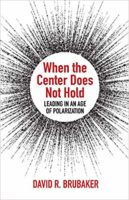
Congregations often experience conflict in response to social movements in the world around them. Since World War II, movements regarding civil rights, the war in Vietnam, the ordination of women, and human sexuality—each vitally important in its own right—also have raised challenges inside congregations, forcing leaders to address internal questions of power and culture.
External Challenges
Each movement for social change challenges established power structures in society and inside congregations. It’s worth looking back to see both differences and patterns:
The Civil Rights Movement. The dominant cultural narrative about the Civil Rights era suggests that while the movement emerged from Black churches in the American South, it was later embraced by a “multiracial Christian Coalition.” There is some evidence to support that claim. However, there was considerable disagreement and inertia among White mainline Protestant and Roman Catholic leaders regarding the Civil Rights movement—and outright opposition from many White Christians. According to Matthew Hall, dean of Boyce College and a Southern Baptist historian, research “makes quite clear that white evangelicals throughout the South were overwhelmingly opposed to the civil rights movement. They may have couched their opposition in more genteel ways than the Klan… but oppose it they did nonetheless.”
The Antiwar Movement. From 1965 to 1975, the war in Vietnam also divided many American congregations and denominations. While the historic peace churches encouraged their youth to choose “alternative service,” and a growing number of Protestant and Catholic leaders spoke against the war, many American Christians strongly supported what they viewed as a “fight against Communist expansion.” Some scholars suggest that the antiwar efforts of some mainline Protestant leaders “alienated many Protestant Americans”—prompting the rise of conservative evangelicalism. As with the highly varied responses to the Civil Rights movement, the views of American Christians on the war in Vietnam covered a very broad spectrum.
The Movement to Ordain Women. Although several American denominations moved to ordain women prior to World War II, most major mainline denominations did so only after the war. These included the Episcopal Church USA, the Evangelical Lutheran Church in America (ELCA), the Presbyterian Church (USA), and the United Methodist Church (UMC). In nearly every case, there was vigorous opposition to ordaining women. Other Protestant denominations, and the Roman Catholic Church, continue to resist efforts to ordain women. Mark Chaves, a Sociologist of Religion at Duke University and the author of Ordaining Women: Culture and Conflict in Religious Organizations, studied over 100 Christian denominations and their stances on ordination of women. Chaves concluded that both internal and external factors account for the wide variance of practice around ordination.
The LGBTQ Rights Movement. Perhaps the most contested question for many churches in recent decades has been how to respond to the desire by individuals who identify as LGBTQ to participate fully in the life and leadership of their congregations, both in terms of marriage equality and leadership roles. As with the ordination of women, some denominations responded in the affirmative, while others maintained their traditional stance. Regardless of the denominational position, many congregations and individual members made their own decisions—some moving to join a more conservative association while others sought a more inclusive one. The result of the responses to this and the previous movements was a significant realignment within American Christianity, with many Americans preferring a more politically and theologically homogeneous congregation.
Internal Impact
Each of these significant social movements emerged from a conviction by a segment of American society that their identity merited fuller inclusion and equity in society and institutions. Each movement also eventually affected congregational life—even the lives of those congregations that resisted integration, inclusion, or ordination of women. Despite the unique nature of each of these major movements, there are three common elements when it comes to their impact on congregational life, as follows:
1. Whatever is happening in society will also eventually affect the congregation. Whether the Civil Rights or antiwar movements of the 1950s and 1960s, or the Equal Rights or LGBTQ rights movements that emerged in the 1970s, any significant national movement will find its way into congregational life. If it is a movement for fundamental change, three groups will likely emerge—those in favor, those opposed, and those in the middle. (Albeit the size and strength of each group will vary significantly by congregation and region of the country.)
In response to the disagreements, a congregation may establish a formal or informal “no-talk rule” around the identified issue, but doing so only ensures that open conversations do not occur. There will still be significant discussion in homes, small groups, or other gathering places. Congregational leaders might sweep some topics under the rug, but they will not be able to keep them hidden.
2. Whatever the identified issue, the underlying issue for the congregation usually revolves around power and authority. When any group is advocating for greater inclusion, participation, or equality, the deeper challenge often has to do with power and authority. Who is at the table for conversation and who is not? Who has the right to participate in decision-making processes and who does not? It is generally helpful in such situations to spend as much time planning the dialogue and decision-making process as the time we devote to discussion and debate. This should include consideration of who will be most affected by the eventual decision—along with mechanisms to ensure that their voices and their votes are fully represented.
3. Whatever decision we make, the culture of the congregation will shape its implementation. It can be very demanding to pass legislation and change policies, but it is even harder to change culture. It is one thing, for example, to declare that we are a “welcoming congregation”—and another to become one. The attention that we give to planning dialogue and decision-making at the front end needs to be matched by the energy we invest in implementation and culture change, post-decision.
Significant movements for change will continue to emerge and create conflict in society, and those conflicts will occupy space in congregations. Healthy congregations recognize that as they address external issues, they will need to attend to questions of power and culture internally as well.
David Brubaker has consulted with organizations and congregations in the U.S. and a dozen other countries on organizational development and conflict transformation. He is the author of Promise and Peril, on managing change and conflict in congregations, and When the Center Does Not Hold, on leading in an age of polarization. David serves as Dean of the School of Social Sciences and Professions at Eastern Mennonite University and is a professor of organizational studies.


